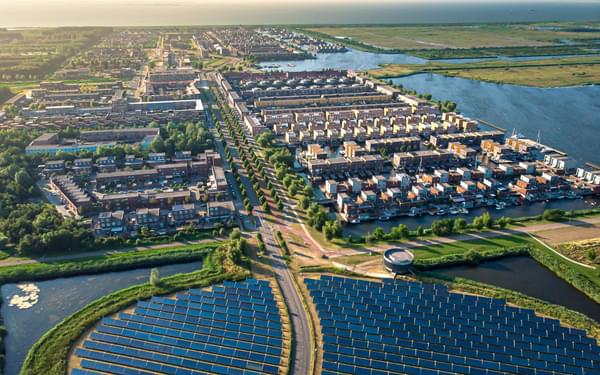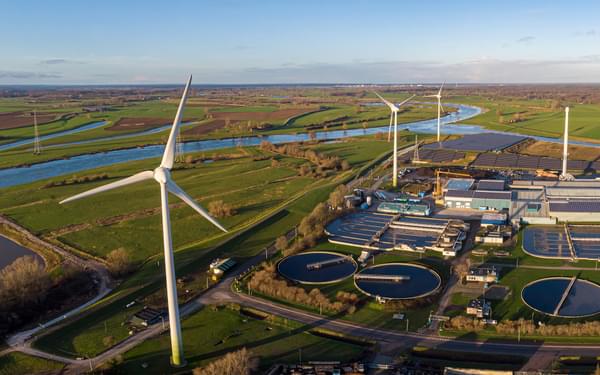Back to Articles
Electrifying the grid: Overcoming challenges for a just transition
Leah Holmes \ 8th Aug 2024
In Scotland, the heat sector devours over half of our total energy consumption and, in the main, used for heating buildings.
Putting an end to the unnecessary burning of fossil fuels and helping to curb carbon emissions all around the world, electricity will be the key enabler on our energy transition.
But here’s the thing, we haven’t fully addressed where all that electricity to power those solutions will come from, and what limitations we have to deal with. So, we’re turning our attention to the power puzzle.
The long and winding road to power
Across the UK, securing reliable power for new developments can be a years-long saga. Scotland is no exception. To make the country more attractive for investment, the National Grid needs to significantly increase infrastructure spending. While their commitment to doubling investment to £30 billion over five years is a step in the right direction, streamlining approval processes and removing development hurdles is equally crucial.
The National Grid and our infrastructure challenge: The make-or-break moment
The key to unlocking Scotland’s electric potential lies in connecting to and interacting with the grid. This is the final hurdle, the make-or-break moment for any project. Here’s where things get fascinating: the type of heating a development uses significantly impacts the grid.
“Individual heating systems negate the opportunity for efficient energy use,” explains Charlie Drysdale, an associate specialising in heat decarbonisation. “But a shared system incorporating a ground or water source heat pump, or even better, waste heat from industrial processes data centres or those with processing plant, can be a game-changer. This shared system approach requires less energy, therefore putting less strain on the grid.”
However, existing grid infrastructure often struggles to accommodate connections, both from renewable sources like wind farms and solar panels (generation side) and from homes and businesses (demand side). Upgrading this infrastructure is expensive, but more importantly laborious — often taking several years.
Many people are calling for a change in how electricity prices are set, and to de-couple. In the past, electricity prices were tied to the price of natural gas — but this doesn’t make sense anymore, as we transition to using more renewable energy sources. These sources don’t depend on the price of gas. Additionally, with more people using renewable heating systems, we need to consider how to tax energy fairly moving forward.

On-site opportunity and microgrids
In the meantime, limiting the grid connection requirement for sites through reducing energy demand, utilising alternative heat sources and shared systems, and clever balancing can provide much-needed value, and be a fantastic bridge to power availability in the near-term.
Ultimately, we know reducing reliance on our national power grid is the best way to cut down those wait times for an electrical connection.
When renewable generation and storage is installed at the same location as the demand, known as ‘behind the meter’, it can help balance fluctuations in renewable energy generation and reduce stress on the grid.
“In this version of our world, buildings and communities become mini power plants,” Leah Holmes, an associate specialising in smart energy and utilities explains. “I’m talking about microgrids, of course, which are utility networks (or mini ‘grids’) with a ‘brain’, that act more cleverly than our traditional utility networks – they can generate, store, and distribute their own clean energy, whilst balancing demand across the site.”
Think of microgrids as little smart networks powered by renewable sources like solar or wind, right there on-site. They typically have an energy centre which acts as the network’s ‘brain’, making decisions on how best to control the interconnected equipment and use storage to take advantage of variable grid tariffs. This can provide balance between intensive energy users, such as data centres, creating heat with domestic users who need it.
If you generate any extra energy, like on a residential development where the majority of people are at work whilst the sun is shining on their houses — it can be stored for later, instead of it being wasted. It could also, for example, be supporting the neighbouring EV Charging facility at the local forecourt in real-time, or the residential EV charge points of those leaving their Tesla charging at home for the day ahead of tomorrow’s trip.
Doing this, edges towards becoming completely independent from the grid, or at least less reliant upon the incoming connection.
An innovative constraints powerplay
It’s not 100% smooth sailing, however, decarbonising the energy supply with renewable generation technologies and storage.
Getting a generation connection from the grid, which you need when connecting any type of generation or storage technology (whether planning to send energy back through the grid or not), can also be a programme-buster. This is due to the grid also having fault level constraints on their network, triggered by generation connections.
There is a solution to being stuck in energy-grid purgatory that may bypass this constraint entirely — this being the installation of a specialist fault limiting device and an alternative infrastructure ‘architecture’, as it were, which can overcome fault level issues and thermal constraints on the grid, to unlock potential for on-site renewable energy generation.
In our experience, a proactive negotiation with the DNO for their approval and acceptance of the non-traditional approach and new technology, will be the difference between a successful application and an unsuccessful one. We recently advised a logistics developer, on this very scenario, in which the local DNO progressed with our fault limiting solution — and is only the second example of its kind in the UK.

It’s all about the place
There’s no one-size-fits-all answer to decarbonisation. Solutions must be tailored to every community, empowering people to lead the charge. In our series we’ve honed in on some of the issues the built environment faces on this journey — but, ultimately, the truest measure of success isn’t reaching net-zero, it’s ensuring a clean energy system that works for all.
“Knitting together a placed-based approach with behavioural science can, and should be, used to design effective programmes to participate in a tailored approach to the heat transition,” explains Charlie.
“We presented on this at All Energy 2024, specifically covering the Theory of Planned Behaviour and its applicability to energy behaviours. We believe it can be used to inform approaches to district heating networks, retrofit and community energy schemes.”
We must understand and address the core concerns and motivations of the people directly impacted by the Local Heat and Energy Efficiency Strategies (LHEES) to effectively implement them. Doing so will ensure they’re effective, inclusive and deliverable.
Achieving net-zero for heating goes beyond finding the perfect technology or short-term gains. It’s about building a sustainable future where everyone thrives. Scotland’s LHEES and Heat in Buildings Strategy lay a strong foundation, but to succeed we need to make sure our heating solutions are both efficient and affordable, while also taking advantage of Scotland’s natural resources.
This article originally featured in Project Scotland in July 2024











